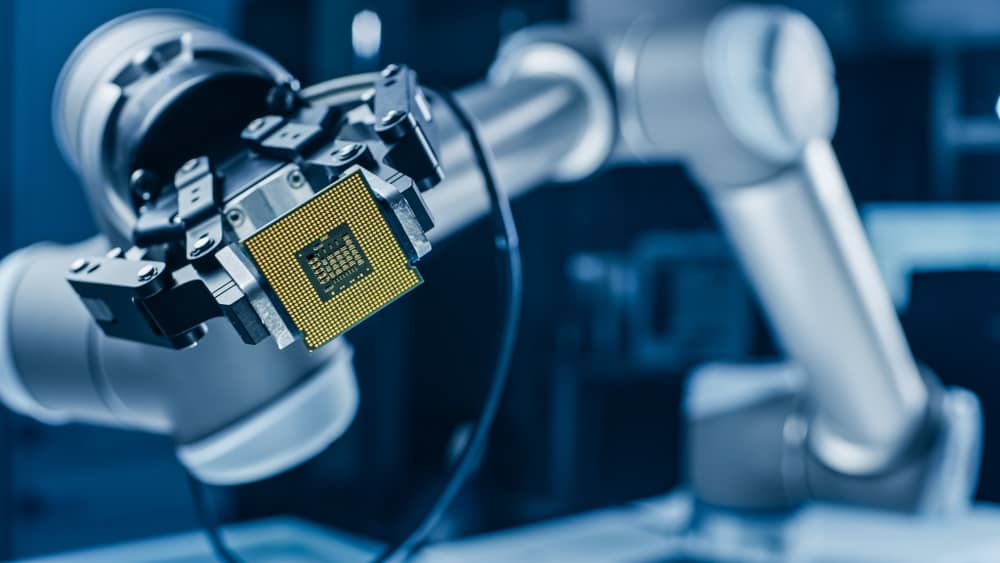Arm Holding’s initial public offering (IPO) last week created a buzz among investors, however, one investment area they will be absent from, a least for the time being, is ETFs.
Shares in the UK-based semiconductor company rose 25% on its first day of trading – taking its market cap to over $65bn – as retail investors flocked to the oversubscribed offering as it became the fifth most traded stock globally last Thursday, according to Saxo.
Arm’s share price has tempered in the days following its listing but many analysts are predicting a bright future for the SoftBank-owned company as it hopes to ride the tailwind of the artificial intelligence boom.
Ben Barringer, equity research analyst at Quilter Cheviot, said investors recognise the business’s “unique status” while its licensing and royalty business will give a “clear sight of earnings”.
Others believe the stock is already overpriced. Peter Gerney, head of equity strategy at Saxo, said: “Our take on Arm remains that its valuation is quite stretched and is predicated on strong expectations that generative AI will structurally lift future growth for Arm.”
Whichever way you slice it, rules-based passive products such as ETFs will not be buying shares in the company any time soon.
Nasdaq likely, S&P no go
Arm launched its IPO on the Nasdaq but is unlikely to be included in its flagship index the Nasdaq 100 this calendar year.
While market cap is not an issue – the smallest company listed on the Nasdaq 100 is $13bn healthcare consultancy Lucid Group – the index only selects constituents once annually in December.
Nasdaq 100’s eligibility requires a stock to have traded for three calendar months, not including the month of the initial listing.
The group is also likely to miss out on inclusion in the S&P 500, and some of the largest ETFs in the world, due to being domiciled in the UK.
Semiconductor ETFs uncertain
A more obvious inclusion for Arm would be in semiconductor ETFs, however, even this is not a gimme.
For example, the $945m VanEck Semiconductor UCITS ETF (SMH) – which tracks the MVIS US Listed Semiconductor 10% Capped ESG index – requires a company to float 10% or more of the shares to be eligible for inclusion.
Arm currently has a reported free float of 9.4% meaning it would fall short, at least for the time being.
“It is possible that the free float will go above 10% in case SoftBank decides to exercise the over-allotment option or if the shares are sold after the initial lockup period,” Kamil Sudiyarov, ETF product manager at VanEck, said.
He added fast track inclusion into the index would also be based on the free-float market cap and three-month average daily volume rankings. Under the index IPO rules, it would have to make it into the top 10 of this aggregate ranking.
“The tenth largest stock in the current ETF composition is Analog Devices, which has circa $88bn in free-float market cap, while Arm has circa $8bn. We cannot say much about the liquidity since the stock only started trading last week,” Sudiyarov added.
Should it meet these criteria, the earliest Arm could be added is following its next review in March.
ETFs such as the Amundi MSCI Semiconductors ESG Screened UCITS ETF (CHIP) and the iShares MSCI Global Semiconductors UCITS ETF (SEMI) have less stringent free-float criteria but still require a three-month trading record.
Athanasios Psarofagis, ETF analyst at Bloomberg Intelligence, said: “Most ETFs will miss the Arm listing but IPO ETFs such as the First Trust US Equity Opportunities ETF (FPX) could potentially see it included.
“It is a great opportunity to show why you might like active. Not having to wait for an index to catch up is a nice advantage.”







